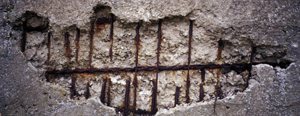
But what about tiny salt molecules carried through the hairline cracks? They can follow the natural capillaries of the concrete structure, and end up right where nobody wants them: the steel rebar. Salt, water and steel do not play well together – and the steel will always lose in the end. By the time anyone has noticed that the steel has been silently eaten away, it is often too late for repairs, and partial or complete replacement of the structure is necessary.
This happened in Florida to the Sanibel Causeway bridges in 1991. Originally opened for traffic in 1963, the causeway and three original bridges helped Sanibel Island experience major economic growth in the early 1970s. Less than 30 years later, major repairs had to be made to the bridges when they began to show signs of corrosion from salt water attacking the structure. The repairs ended up being an expensive bandaid solution, with more repairs needed in 1997. Rapid deterioration continued even after these efforts, and in 2001 Lee County was forced to replace all three of the bridges.
Construction didn’t begin until 2004, but finally the ribbon was cut on all three of the new bridges in September, 2007. After three years and $137 million dollars, traffic finally resumed to normal speed limits and volumes.
That is until January, 2013, when hairline cracks were found sooner than expected. Crews are now working to find, mark and monitor each crack, to determine if this is normal wear or if action needs to be taken to ensure the bridges live up to their 75-year lifespan promise.
Wouldn’t it be easier to just block the capillaries that carry the damaging salt water to the steel? You can if you use a Crystalline Integral Waterproofing admixture, either added to the concrete itself during the concrete pour, or brush or spray-applied to the existing concrete surface. Krystol Internal Membrane (KIM) is the original admixture of this kind, invented in 1980 by Kryton.
KIM formulates chemical crystals throughout the concrete mass, maximizing waterproofness, reducing water demand, inhibiting shrinkage and cracking, reducing bleeding time, improving workability, curing, and compressive strength. KIM is able to protect both the concrete and reinforcing steel against aggressive damaging agents, while still allowing passage of air. Unlike a sheet membrane, KIM will last the life of the structure, and only grow stronger and more waterproof over time.
How would you want your tax dollars spent? With a solution that will need to be replaced in 30 years (it’s really not that far away), or would you prefer peace of mind, knowing that $137 million be put into something you can really benefit from in 30 years.



